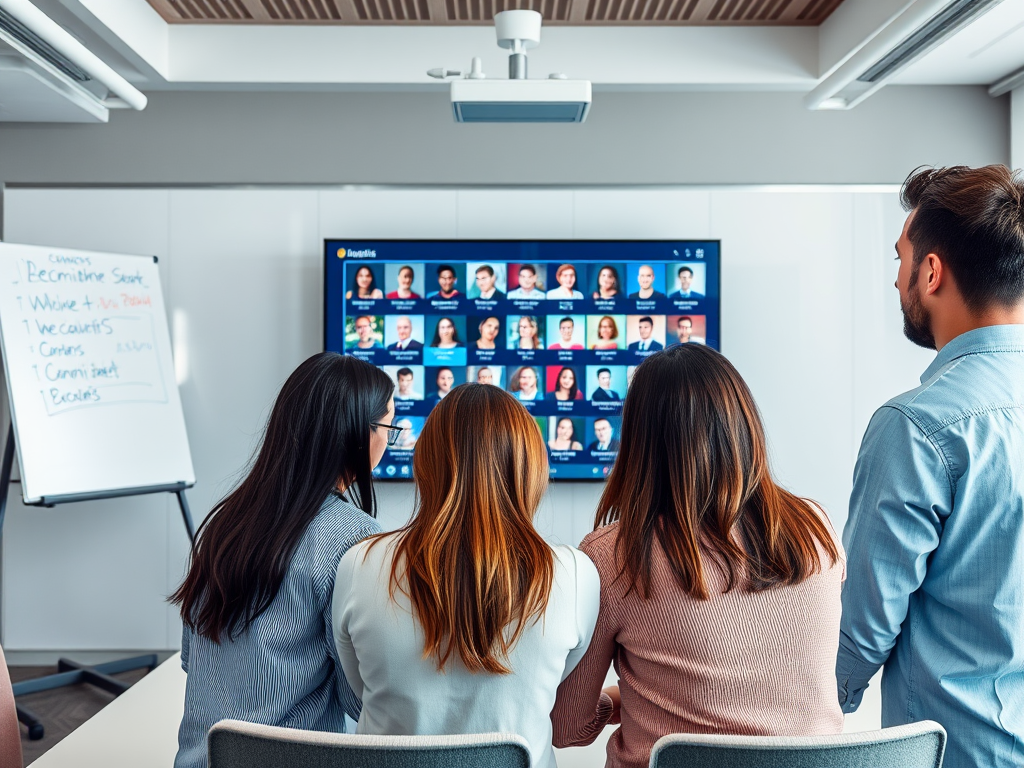Fair Hiring Practices: Reducing Recruitment Bias with AI
The evolution of the world today comes with so many aspects of diversity included, which means that there has to be some sort of progress in the strategies employed for hiring. The most pernicious obstacle in recruitment processes today is bias, and it is usually invisible. With the emergence of Artificial Intelligence (AI), there is now a chance to focus on eradicating these biases and building a more equitable hiring process. The right application of this technology requires understanding the possibilities of AI and the nature of recruitment bias. These companies have improved their organizational culture, and more importantly, have been able to capture the attention of a larger pool of talent. This article analyses AI’s role in addressing the biases in recruitment and discrimination practices.
Understanding Recruitment Bias

The issue with recruitment bias stems from preconceived notions, and is quite harmful to many organizations. The issue is, even if they attempt to be objective in their hiring practices, many organizations find themselves suffering from it. There are numerous varieties of recruitment bias which handicap a candidate’s chance of success unfairly. For example, hiring managers with affinity bias are more likely to choose candidates who fall within their common interest or social circle. Furthermore, managers may harmfully exercise biases based on gender or race due to a lack of diversity in the workforce. These biases must be acknowledged, for they form the basis of the most fundamental underlying issues concerning fairness and equity in the hiring process.
- Affinity Bias: Preference for candidates with shared experiences.
- Confirmation Bias: Selective attention that reinforces initial judgments.
- Gender and Racial Bias: Assumptions made based on demographic characteristics.
To practically resolve recruitment discrimination, organizations need to study the antecedents even more thoroughly. When bias originates from a perception, it operate in a very complicated manner without coming to the surface. At this stage, AI technology could surface and provide a fix through objective data analysis. Additionally, the speed at which AI processes information greatly increases the chances of candidates being fairly judged and objective discrimination being reduced even further. As we move forward, we must be particular about how these dynamics will change radically because of AI.
The Role of AI in Reducing Bias

Utilizing AI in the recruitment process is not a fad, but rather a sign that more analytical techniques are being adopted within the field. Most noteworthy is the ability of AI technologies, in particular, to scan resumes with zero emotional bias. Candidates are guaranteed better neutrality and equity in the recruitment process since they are not discriminated against based on biases, but judged on qualifications and skills. In addition, the effectiveness of hiring can further be enhanced by AI technologies since businesses can sift through numerous applications and identify the best candidates with ease. This improves the overall quality of new hires and saves time at the same time.
- Resume Screening: Filters resumes based on relevant job criteria.
- Structured Interviews: Helps create uniform interview questions.
- Analytics and Reporting: Provides insights into hiring patterns and biases.
| AI Application | Benefit |
|---|---|
| Resume Screening | Reduces personal bias in initial evaluations. |
| Structured Interviews | Provides a consistent framework for comparing candidates. |
| Analytics | Identifies and rectifies potential biases in recruitment. |
Best Practices for Implementing AI in Hiring
Equitable results and accuracy in AI recruitment can be accomplished when certain best practices are observed. Companies must train their AI systems on comprehensive and well-categorized datasets. This minimizes the chances of automatically duplicating the biases present in the data. In addition, continuous supervision of AI systems is crucial to ensure that they do not introduce bias over time. There needs to be regular scrutiny of AI systems for discrimination in AI-assisted hiring. Besides, some degree of human involvement in the decision-making processes can moderate the extreme rational decisions made by AI systems.
- Diverse Data Inputs: Train AI on varied datasets.
- Regular Audits: Monitor AI performance over time.
- Human Oversight: Ensure human involvement remains integral.
Conclusion
Fair hiring procedures are the foundation of every organization that seeks equity and diversity. Automated bias elimination during recruitment aids in formulating an advanced equitably biased system of hiring where personal irrelevant identifiers matter the least. Differentiating An AI answer in the hiring logic not only enhances the decision making in employing an individual from a social perspective but provides more responsibility in workplace issues. In these times of rapid technological growth, it is very important to combine AI with the human aspect of the process so that every ay doff candidate is cherished and accorded the respect he deserves. Overall, applying AI to hiring practices brings about the most promising change in recruitment that offers equality for all and the most inviting opportunity devoid of discrimination for all qualified candidates.
Frequently Asked Questions
What is recruitment bias? Recruitment bias is the practice of discrimination or favoritism towards a candidate on the basis of gender, race, or affiliation rather than consideration of relevant factors.
How can AI help reduce recruitment bias? AI can assist by helping to analyze candidates qualitatively. It can identify and eliminate bias associated with resume screening, interviews and evaluation of candidates.
Are there any risks associated with using AI in hiring? Yes, risks include overreliance on the training data, which may be biased, and insufficient evaluation of the candidates by other humans.
What can organizations do to ensure fair AI implementation? Organizations need to develop inclusive datasets, carry out periodic evaluations of the AI algorithm, and ensure there’s human intervention in the decision-making process.
Can AI fully eliminate bias in hiring? No, it cannot. In as much as AI could minimize biases, it does not eliminate it. Human intervention will always be needed for proper assessment and consideration of the candidates.


